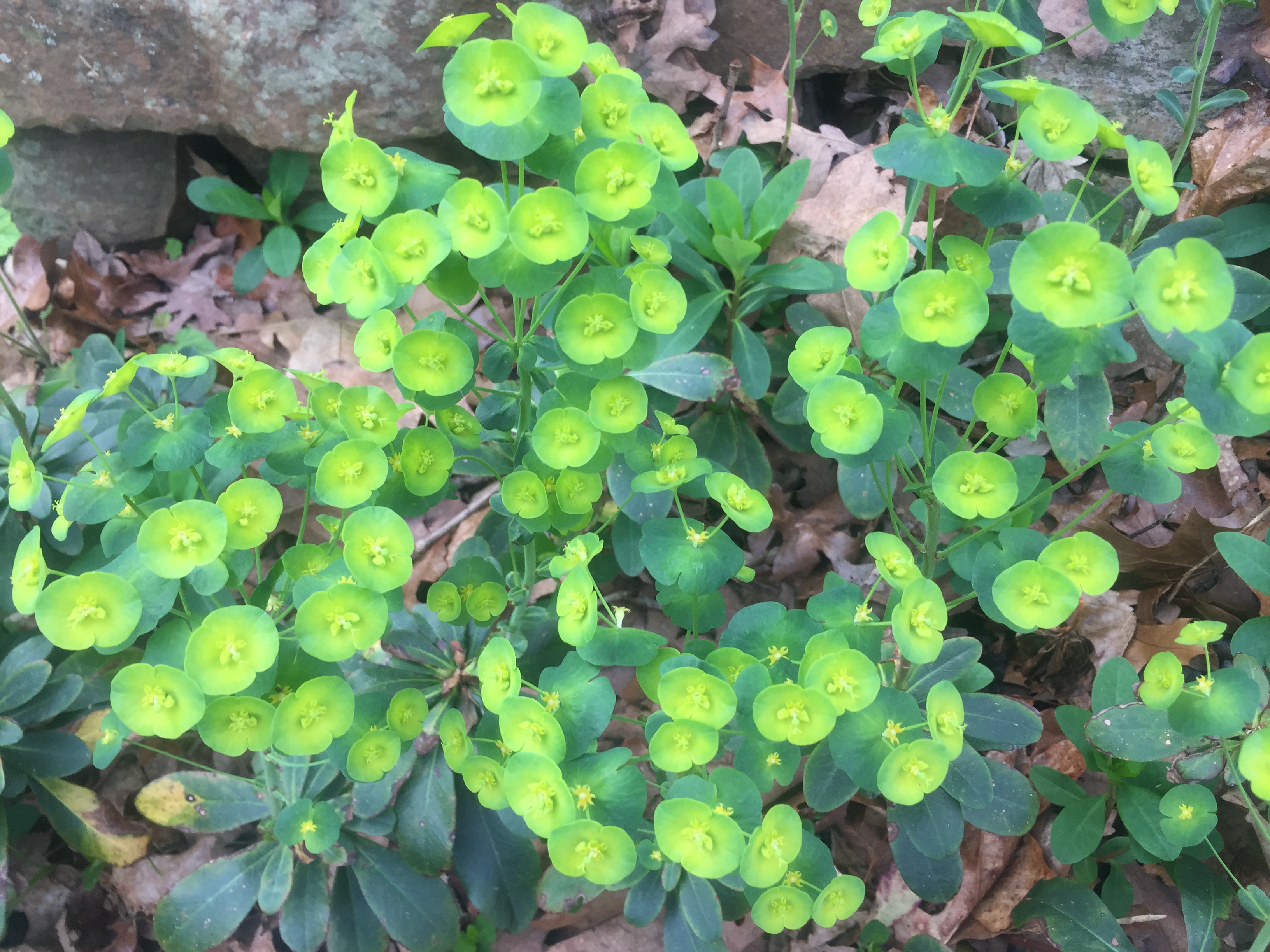Resource Library
Plant of the Week: Euphorbia amygdaloides var Robbiae; Woodland Spurge, Mrs. Robb’s hatbox spurge
The sequence of early spring bloom in my garden is predictable, at least to an extent. The 2020 spring display of blooms is in order, but instead of blooming over a three-week period as normal, the very mild winter caused all of the early spring plants to bloom at the same time. Mrs. Robb’s hatbox (Euphorbia amygdaloides subsp. robbiae) is making its presence known amongst the early display.
The euphorbs (spurges) are one of the largest genera of plants with over 2150 species scattered around the world. Their most common features, their milky sap and their showy floral display that consists of modified leaves (bracts) instead of petals makes them easy to identify.
Mrs. Robb’s hatbox is an evergreen perennial that spreads by shallow rhizomes and forms colonies of leafy shoots growing about a foot tall. The spatulate to obovate shaped rich green leaves are to three inches long and produced in whorls near the ends of the upright branches. These upright stems are biennial in nature with the first year producing only leaves but with a flowering stem produced from the apex of the stem early the following spring. After flowering that stem dies but the rhizome expands and produces new vegetative shoots.
An erect foot long panicle is produced in early spring and terminates with a series of terminal, 2-inch-long peduncles ending in a pair of fused rounded bracts about ¾ inch across. The bracts are a bright yellow green with a small cluster of true apetalous flowers in the center. From the base of this flower (called a cyathia) a pair of new peduncles emerge which bear another duplicate, but smaller pair of bracts with another cyathia. If conditions are good, the process may repeat itself a third time. The bracts quickly transition to green after flowering. A small, three-sided pea sized seedpod is often produced and can lead to new plants establishing by reseeding.
Mrs. Robb’s hatbox is a variant form of this Turkish species. It varies from the species by spreading more vigorously by its rhizome and by having a slightly larger, more robust form. It also has a different chromosome number than the species.
The plant was found north of Istanbul, Turkey by Mary Anne Robb (1829 – 1912) in 1891 when she was making a tour of the Mediterranean. Liking the plant, she collected cuttings and carried them back to her English estate in the box designed to hold her elaborate bonnet. The English call the plant Mrs. Robb’s bonnet while Americans favor Mrs. Robb’s hatbox. The plant was shared with friends and ended up at Kew Gardens where it was originally described as a new species, but eventually relegated to subspecies status of the woodland spurge.
I have grown Mrs. Robb’s hatbox for almost 20 years in my dry, shaded, hillside garden. Really, it has grown itself and I have sat back and watched. The two clusters have moved a few feet in various directions, but have never escaped the general bounds of planting. A friend’s planting in sandier soil and more sun has made a fuller patch, but it too has been well behaved. I usually clip off the bloom spikes by late spring, but don’t always get to the task before the seeds have dispersed. Like most Mediterranean plants, it should not be planted in a wet area. Plants are considered winter hardy through zone 6. Some people report the milky sap can cause irritation if it comes in contact with soft tissue.
For more information about horticulture or to see other Plant of the Week columns, visit Extension’s Website, www.uaex.uada.edu, or contact your county extension agent. The Cooperative Extension Service is part of the U of A Division of Agriculture.
